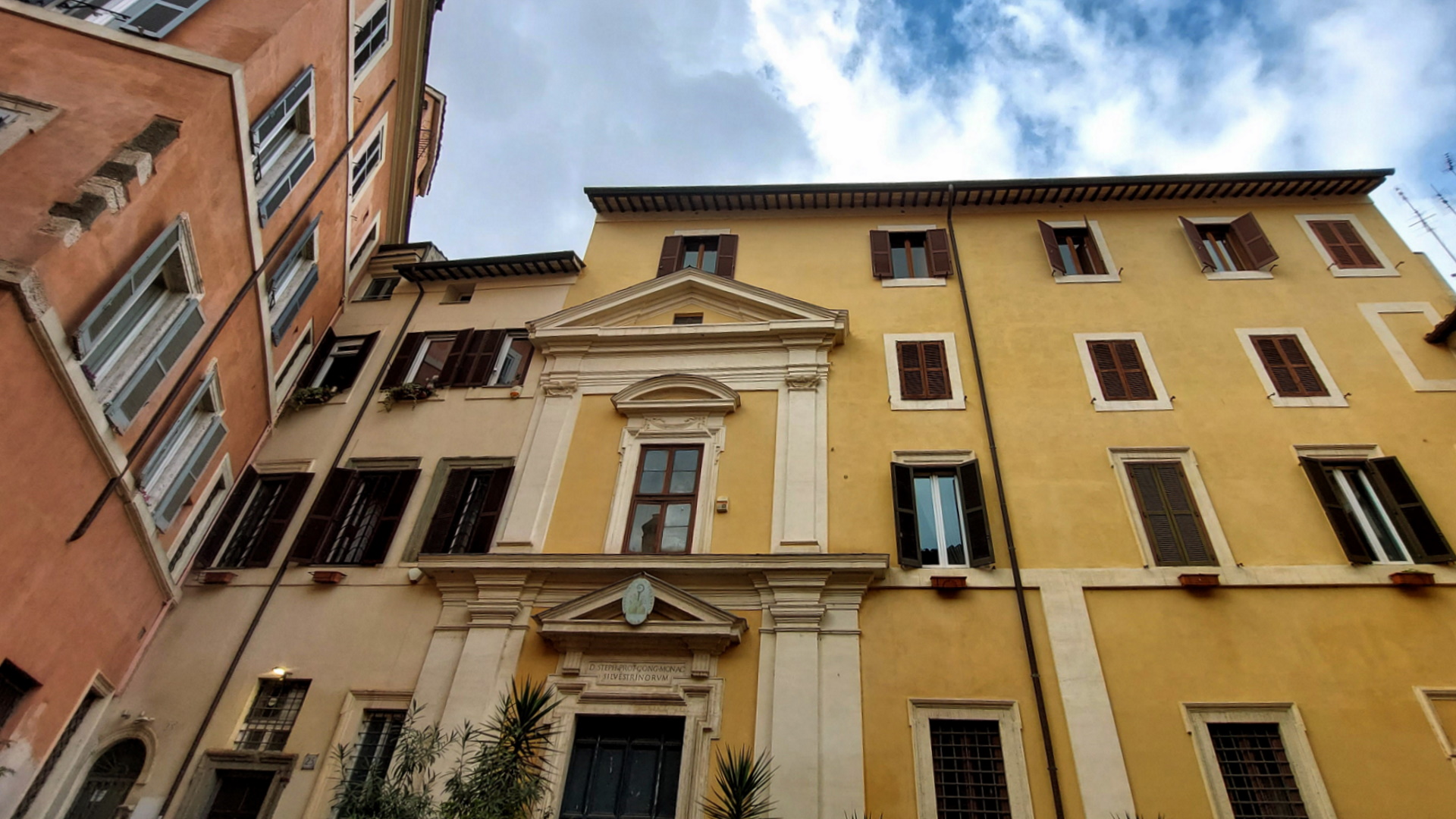
The church first emerges into documented history with the name Sancti Stephani de Pinea because of the huge antique pine cone, now preserved in the Vatican City, after which the whole district was named. Its present strange name derives from one of the many Roman remains found in the area or emerged from the subsoil over the centuries. Like other buildings in the area, the church stands on the ruins of a grandiose Egyptian temple, known as the Iseum Campense after its location in the Campus Martius: according to some sources, “cacco” would be the popular corruption of macaco (macaque), the way people called a statue of the Egyptian god Thoth represented as a baboon with a dog’s head.
The church is very ancient even if the exact time of its foundation is not known. Its construction is generally traced back to the 9th century with Pope Paschal I, who was depicted in the apse mosaic that was destroyed in 1607. The Romanesque campanile, now incorporated into the nearby monastery, and the apse date back to the 12th century. In 1563 Pope Pius IV granted the church to the Sylvestrine Benedictine monastic order. The Sylvestrines began a major project of renovation and, between 1638 and 1643, the church was given a Baroque makeover resulting in its present appearance.
The plan is basilical, having a central nave with arcades into side aisles. Twelve ancient columns of grey marble, cipollino and grey granite have been reused in the church arcades. During following restoration, five chapels were added and, in the mid-19th century, the floor which was re-laid with marble salvaged from the burnt-out San Paolo fuori le Mura. On the right wall a niche contains the church’s most famous artistic treasure, a “Pietà” by Perìn del Vaga, Raphael’s favorite pupil; other paintings are by Cesare Nebbia, Giovanni Baglione and Cristoforo Casolani, a pupil of Pomarancio. Also noteworthy are the 1668 wooden choir stalls, the 17th-century crucifix and the 1642 organ in the counter-façade.
Information
For the timetable of the masses and visiting conditions, please consult the contacts.
 Condividi
Condividi
Location
To find out about all accessibility services, visit the Rome accessible section.











































